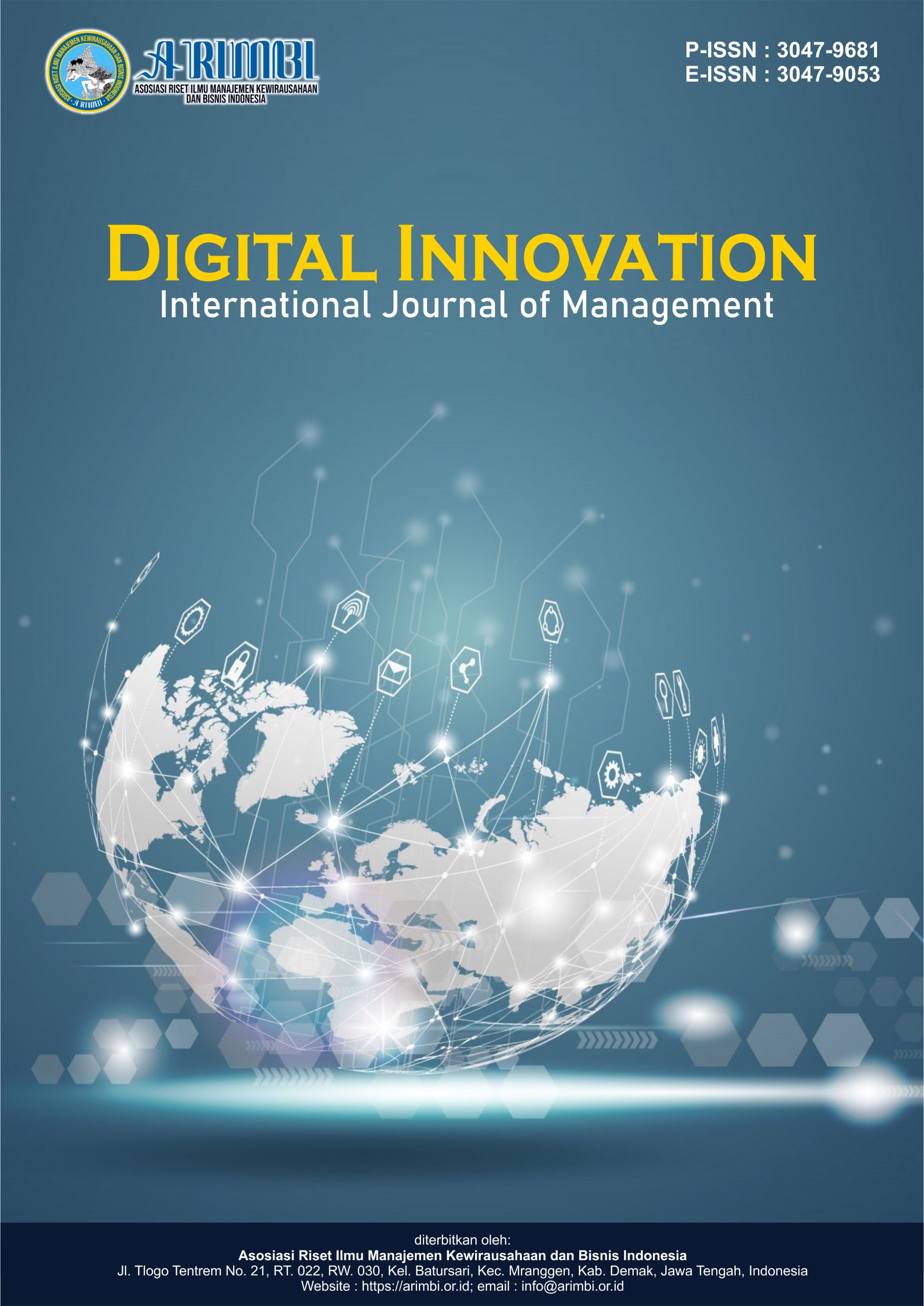Trading Volume Analysis and Price Before Share and After Stock Split and the implications to Liquidity Indonesian Capital Market
( Study Empirical in Companies Listed on the IDX in 2022 – 2024)
DOI:
https://doi.org/10.61132/digitalinnovation.v2i4.522Keywords:
Indonesia Stock Exchange (IDX), Statistical Test, Stock Price, Stock Split, Trading VolumeAbstract
Research on stock splits has been widely conducted in Indonesia and internationally, as stock splits are considered an important corporate action that can influence investor perception and stock performance. However, the motivations and consequences of stock splits remain diverse, ranging from efforts to increase stock liquidity, adjust market price ranges, attract new investors, or signal positive corporate prospects. This study aims to empirically reanalyze the effect of stock splits on trading volume and stock prices of companies listed on the Indonesia Stock Exchange (IDX) during the 2022–2024 period. Specifically, the research investigates whether significant differences exist between trading activities and stock price levels before and after the stock split event. The data used in this study are historical in nature, consisting of stock split announcements, daily trading volume, and stock price movements surrounding the event period. To test the hypotheses, this research employs both the paired-sample t-test and the Wilcoxon signed-rank test as statistical tools. These tests are appropriate because they allow for the comparison of two related samples, namely the stock performance indicators before and after the split. The selection between the two methods depends on the distribution of the data, where the paired t-test is used if the data is normally distributed, while the Wilcoxon test is applied if the normality assumption is not met. This study is categorized as moderate TKT (Technology Readiness Level 4–6) because it uses secondary historical data and focuses on empirical statistical analysis rather than experimental or simulation-based approaches. By examining stock split events within the specified period, this research contributes to the understanding of whether stock splits in Indonesia are primarily cosmetic in nature or if they generate real economic impacts on liquidity and stock valuation. The findings are expected to provide useful insights for investors, market analysts, and policymakers in assessing the relevance and effectiveness of stock splits as a corporate strategy.
Downloads
References
As'ari, A. G. P., & Pertiwi, T. K. (2021). Fundamental ratios to profit growth: Firm size as a moderating variable. Journal of Information Systems, Applied Management, Accounting, and Research, 5(1), 261–270. https://doi.org/10.52362/jisamar.v5i1.382
Brigham, E. F., & Houston, J. F. (2019). Financial management. Jakarta: Erlangga.
Connelly, B. L., Certo, T., Ireland, D., & Reutzel, C. R. (2011). Signaling theory: A review and assessment. Journal of Management, 37(1), 39–67. https://doi.org/10.1177/0149206310388419
Donaldson, L., & Davis, J. H. (1991). Stewardship theory or agency theory: CEO governance and shareholder returns. Australian Journal of Management, 16(1), 49–64. https://doi.org/10.1177/031289629101600103
Hirmawan. (2020). Comparative analysis of abnormal returns and trading volume activity before and after the stock split in the 2015–2016 period. Journal of Economics and Business, 13(2), 39–52. https://doi.org/10.31942/akses.v13i2.3240
Januar, Putranto, & Susanto. (2024). Analysis of the effect of stock split and reverse stock split on abnormal returns (Case study of companies listed on the Indonesia Stock Exchange for the 2017–2018 period). Jurnal Masharif al-Syariah: Jurnal Ekonomi dan Perbankan Syariah, 9(2), 909–919.
Jensen, M. C., & Meckling, W. H. (1976). Theory of the firm: Managerial behavior, agency costs, and ownership structure. Journal of Financial Economics, 3, 305–360. https://doi.org/10.1016/0304-405X(76)90026-X
Jogiyanto, H. (2014). Portfolio theory and investment analysis (10th ed.). Yogyakarta: BPFE.
Kasmir. (2015). Financial statement analysis. Jakarta: Rajawali Persada.
Maksimovic, V., & Zechner, J. (1991). Debt, agency costs, and industry equilibrium. Journal of Finance, 46(4), 1619–1644. https://doi.org/10.2307/2328566
Munawir, S. (2010). Financial statement analysis (4th ed.). Yogyakarta: Kemerdekaan.
Zuhri, M., & Novitasari, R. (2023). Stock split and its implications for abnormal returns, stock prices, and stock trading volume 2016–2019. Journal of Management and Banking. https://doi.org/10.55963/jumpa.v10i1.509
Mustofa, & Widodo. (2024). Comparison of stock prices, TVA, and abnormal returns before and after a stock split. Revitalization: Journal of Management Science, 13(2). https://doi.org/10.32503/revitalisasi.v13i2.6502
Ross, S. A., Westerfield, R. W., Jordan, B. D., Lim, J., & Tan, R. (n.d.). Fundamentals of corporate finance. Singapore: McGraw Hill Education.
Ross, S. A. (1977). Determining financial structure: An incentive signaling approach. Bell Journal of Economics, 8, 23–40. https://doi.org/10.2307/3003485
Yunitasari, S., Mursalin, S., & Stiawan, E. (2024). Analysis of the impact of stock split on stock trading volume and stock returns on the Indonesia Stock Exchange. Jurnal Edunomika, 8(4). https://doi.org/10.29040/jie.v8i4.16165
Spence, M. (1973). Labor market signals. Quarterly Journal of Economics, 87, 355–374. https://doi.org/10.2307/1882010
Weston, J. F., & Copeland, T. E. (2010). Financial management (Vol. 2). Jakarta: Binarupa Aksara Publisher.
Indonesia Stock Exchange. (n.d.). Indonesia Stock Exchange. https://www.idx.co.id
Downloads
Published
How to Cite
Issue
Section
License
Copyright (c) 2025 Digital Innovation : International Journal of Management

This work is licensed under a Creative Commons Attribution-ShareAlike 4.0 International License.




